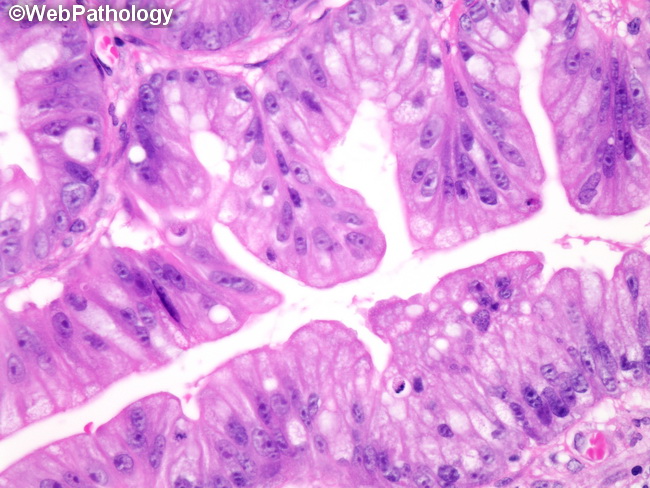AdenoCA of Colon : Serrated


Comments:
Serrated adenocarcinomas of colon are linked to the serrated pathways and are thought to arise from precursor serrated lesions (hyperplastic polyps, sessile serrated adenomas, traditional serrated adenomas). They account for about 7.5% of all colorectal cancers (CRCs) and approximately 17.5% of proximal CRCs. The malignant component can show serrated (as seen here), mucinous or trabecular architecture. The tumor cells show minimal cytologic atypia, abundant eosinophilic cytoplasm, no necrosis, and preserved polarity. Molecular Pathogenesis:The serrated pathway of CRCs is distinct from the conventional adenoma-carcinoma sequence (characterized by mutations in APC/â-catenin signaling pathway) and the defective DNA mismatch repair pathway (operational in hereditary non-polyposis colorectal cancer). Serrated pathway is characterized by early oncogenic BRAF mutations and CpG island methylator phenotype (CIMP). The microsatellite stability (MSI) may be high or stable. Serrated adenocarcinomas arising from sessile serrated polyps are seen in proximal colon and show high MSI due to loss of MLH1 function caused by hypermethylation of MLH1 promoter. Those occurring in the distal colon arise from traditional serrated adenomas and are MSI stable.



